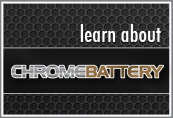[embed]https://www.youtube.com/watch?v=og3JjfpgHpo[/embed]
(ADULT SUPERVISION REQUIRED)
This experiment will allow you to see how heat is produced by the resistance in an electrical conduit.
MATERIALS:
- Insulated wire with alligator clips
- 9-Volt Battery
- Nichrome Wire
- Candle
- Piece of Wood (150mm x 50mm x 20mm)
- Wire Cutters
- Hammer & Nails
- Hammer a nail partway into each end of the flat piece of wood. This will form the base and the two nails will form the terminals that will be attached to the nichrome wire.
- Take a piece of nichrome wire (which can be obtained from an old toaster), wrap each end around the head of both nails, making sure the wire is slightly taut and level between both nails.
- With the help of an adult, drip a thin coat of wax from a lit candle onto the entire length of the nichrome wire. (You may want to use old newspaper to catch any wax that may spill.)
- Using the insulated wire, connect one piece to the negative terminal of the battery connecting to a nail, and then to the positive terminal of the battery to the second nail.
- Watch what happens! You will notice that the wax coating near the nail connecting to the negative battery terminal starts to melt faster than the wax on the opposite end.




